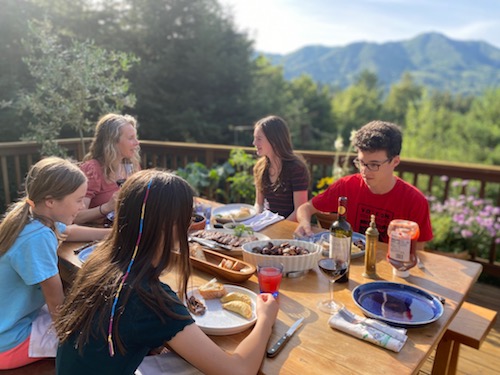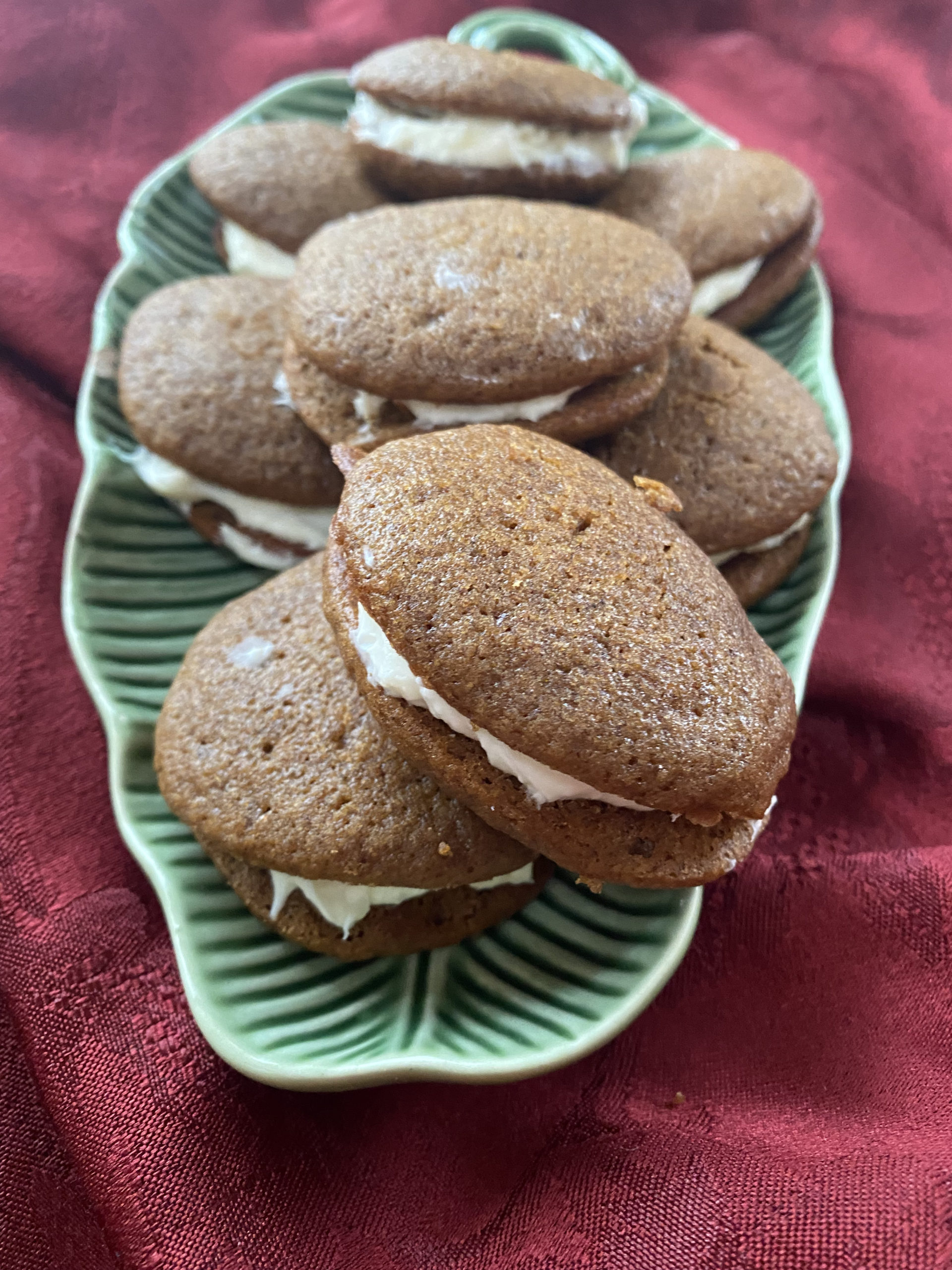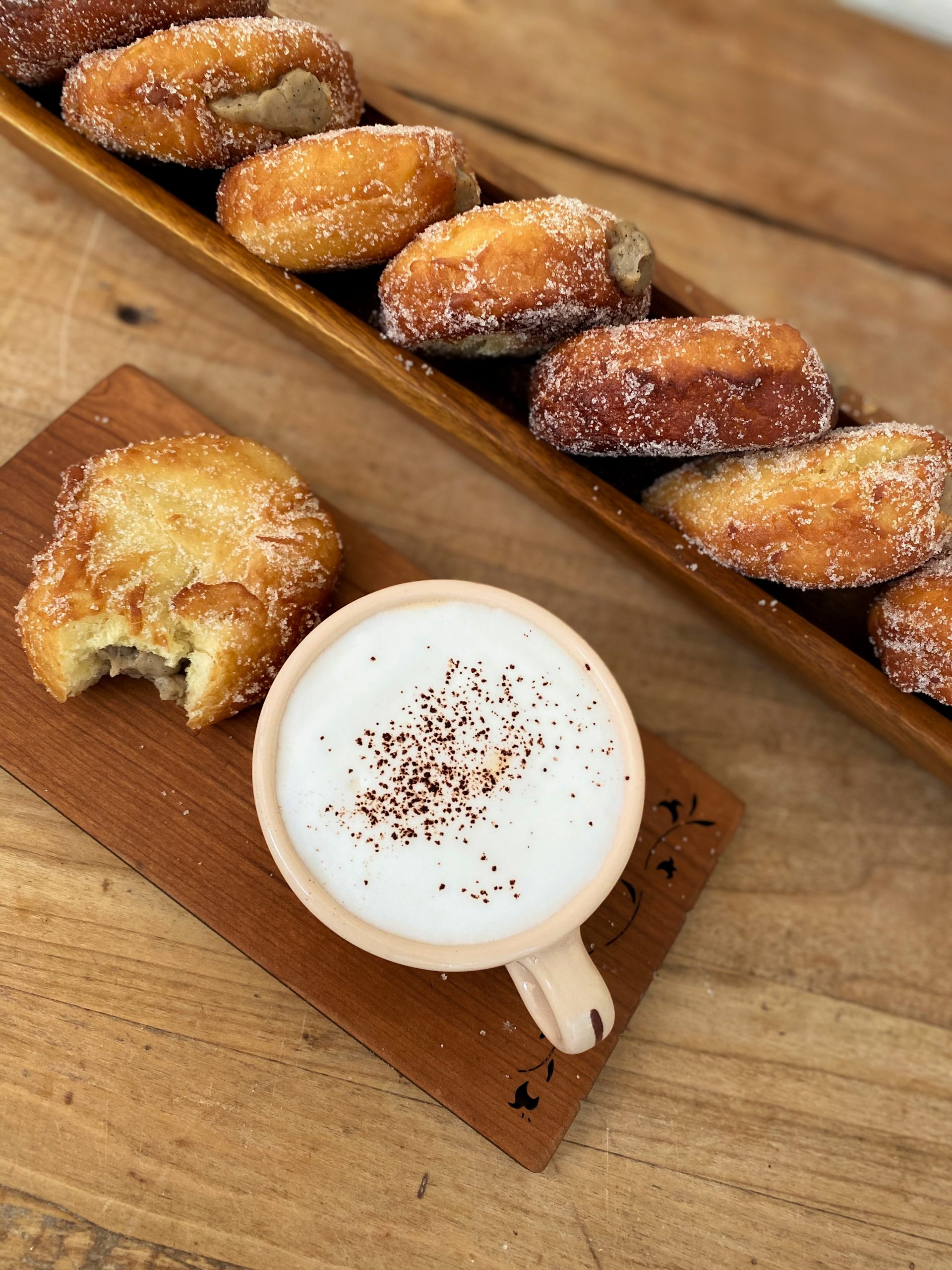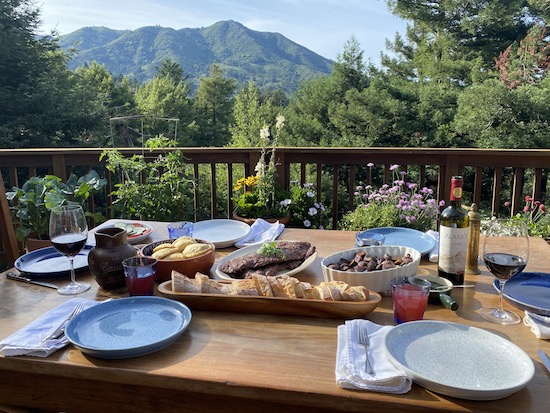
We’re re-navigating our summer plans. With our big trip out of the country pushed off until next summer, we look to finding ways to make the most of the summer 2020, while keeping our family safe and healthy.
As part of these efforts, I find myself paging through my recipes and cookbooks, along with old business travel notes, with a goal to visit places via food, as a diversionary summer adventure.
While doing so, I happened upon my notes from several business trips to Argentina. On one such trip, a food and wine adventure spanning the length of the country from Patagonia in the south to Salta in the north, I found inspiration. It’s an adventure that is 20 years old, but one that left me longing for another visit each time I wrap my alpaca poncho around my shoulders (a gift from one of the winemakers).

As I read my notes, and dug out the photos, I was instantly transported back 2 decades. My memories were reignited, my heart filled with happiness, and my belly longed for a bit of food. So, I decided to embark on an at-home Argentinian food adventure. Here it is, sprinkled with a few thoughts from my notes of these travels, which served as inspiration for our Sunday Supper travel adventure – Argentinian Style.
The Meal as the Centerpiece
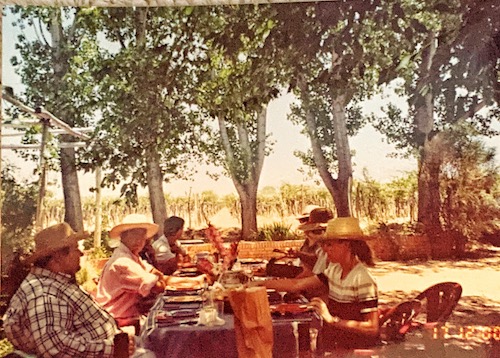
One thing is clear, the meal plays a significant role in the social and cultural fabric of Argentina. The food traditions, the act of eating together, the time spent socializing, is essential. The food on the table represents the people, the land, and the culture. And whether it is prepared for an occasion, as a celebration with friends, or to honor someone, it is an occasion not to be forgotten.
Argentina’s varied cuisine is not only a result of immigrants, but the varied landscape and climate found within its borders. It is bewildering diverse, with asado grilled meats being ubiquitous, empanadas throughout the country, pasta, goat in the north, lamb in the south – and beef in the pampas – a perfect backdrop for so many flavorful meals.
“I landed in Buenos Aires from Miami. It was my third time to the city, and although alone, I felt at home. I spent the evening walking the city, grabbing dinner at a café, and watching Tango dances on the street.
The following morning, I took a quick flight to San Carlos de Bariloche in the Patagonian Lake region, and was totally mesmerized by the change in landscape with its snow-capped mountains, blue lake water and Swiss-style chalets.”
Travel journal, Dec. 2000

Down south in San Carlos de Bariloche, my stay began at the Llao Llao Resort, which was surrounded by the Cerro Lopez and Tronador mountain peaks the resort was nestled on an outpost on the edge of Nahuel Huapi lake. While I could have spent days just relaxing at the resort, taking in the beauty of the environs, I dove right into learning about the foods from this fertile region. My hosts, Horatio and Monica, immediately began my education about this area. During this time I visited farms and met with manufacturers of jarred fruits, organic cheese, smoked meats. We then took a quick drive further south to Bolson, where my education continued. They explained how this area had become synonymous with artisanal preserves, as well as smoked trout and salmon. I became acquainted with the typical specialties – dulche del leche, wild mushrooms, and sheep’s milk cheeses , along with a must-serve appetizer, fresh cheese mixed with onion and oregano.
In a country that prides itself on wine, I also learned of the then burgeoning microbreweries of El Bolson. In the mid to late 19th century, German immigrants brought a love for beer to the Northern Patagonia Lake District, and here you can find a host of German-style and specialties beers. The green valley between the mountains provides a fertile place for growing hops – and, many of the regions berries – raspberries, blackberries, cassis, are festured in the many craft brews from this region.
Fire, Grill and Meat – the Asado
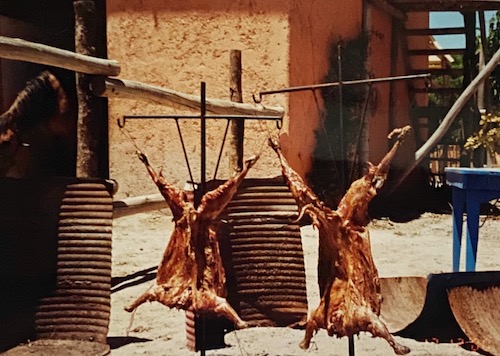
And then, there was the asado. The constant parade of meats I enjoyed during this trip – slowly cooked on the parilla, while we conducted business.
“After a day filled with learning about the ‘fruits’ of this region, we enjoyed a typical Patagonian Asado – lamb out on the grill, splayed out and cooked in the pit. I’m told the traditional way to enjoy it is to let every pull, cut or tear whatever they need from this spit. I didn’t have to pull, cut, or tear that day, the lamb was brought to our table. I was also told that lamb used to be only for holidays or celebrations, but they were enjoying it with more frequency – and many tourists came for it as well.”
Travel notes, Dec 2000
Wine, Wine, and more Wine
From down south, I left my hosts and headed towards Mendoza, where I joined two other journalist for my next adventure – with wine as the centerpiece of the discussion. Manual, one of my hosts, quickly informed me that, “One of Argentina’s strengths is the wide variety of grapes brought by our immigrants. That is our richness.”
Mendoza is the largest of Argentina’s wine region. Its history is old, with first wines being planted back in the mid-16th century. Malbec was introduced early on, and has become synonymous with this region for many, but it offers so much more these days, including Cabernet Sauvignon, Chardonnay, Syrah, Sauvignon Blanc, for example. When I visited 20 years ago, winemakers were just beginning to focus on greater quality to bring these wines to the world.
One day, which melted into an evening, was spent at Ricardo Santos’ home, winemaker of his namesake Malbec . it was a fun and enlightening experience. With a total of four winemaker’s in attendance, there was much concurrence, as well as controversy, about wine – while, of course, we enjoyed some food.
The Empanada
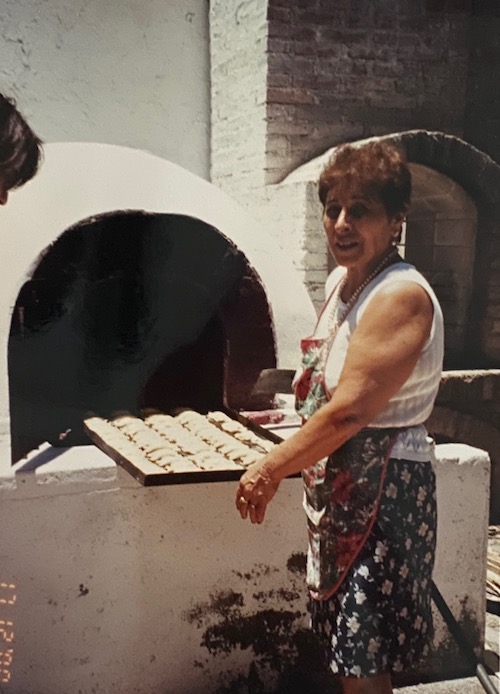
During my days in Mendoza, I also became better acquainted with the empanada. Yes, they are ubiquitous throughout the country, but it was here, more than down south, that it made an impression on me. They are varied on the inside, with eggs, beef, chicken, spices, lard, onion . . . They were there to take us through cocktail hour, and to fill our bellies in between meals (if needed). A few weeks after returning home to Miami, I received a note from one of my hosts from Mendoza, sharing with me, the empanada recipe we enjoyed while at the winery, along with a visual on how to fashion the empanada.
Off to the North
One last wine adventure took us from Mendoza, up north to Salta, another burgeoning (at the time) wine growing region. It was a car ride not to be forgotten . . .
“On the way to Salta Province, I marveled at the changing landscape – the changing terrain, the changing climate. We moved from lush valleys to dry dessert, and beyond. We stopped for lunch in the town of Molinos, where it seemed as if our lunch stop was the only building for miles. Our bellies filled beyond capacity, and our eyelids heavy, our host/driver, Laura, instructed on of the locals to fetch something. He returned to the table with a heap of coca leaves. Laura proceeded to show us how to prepare and chew them, so the ride ahead wouldn’t lull us to sleep. (Although the bumpy dirt roads we took would surely keep us awake). All 3 of us obliged, and stuffed some coca leaves in our cheeks.”
Travel notes, Dec 2000
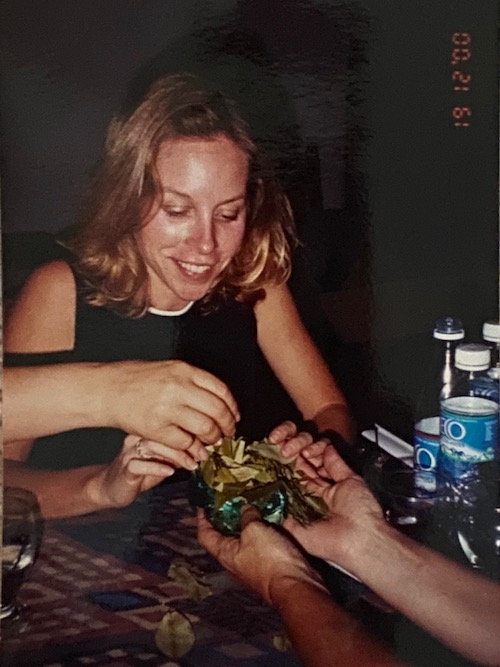
After four hours of driving, we arrived in the Calchaqui Valley in the highlands of Salta, we found ourselves at the Colome winery, one of the county’s oldest wineries, located at 2300 meters high.
The quiet surrounded us, and we were taken under the wings of the winemaker, (apparently it was sold to current owners a year after my visit), to learn of the history of Bodega Colome, which dates back to mid 1800’s.
Our days events were capped off my a memorable dinner at the hacienda (where we would also spend the night). During dinner, the electricity clicked off – something that our host mentioned is a daily occurrence. The candles were quickly lit, and we headed outdoors for another post-dinner glass of wine, and a bit of star gazing. It was a memorable end to my adventure.
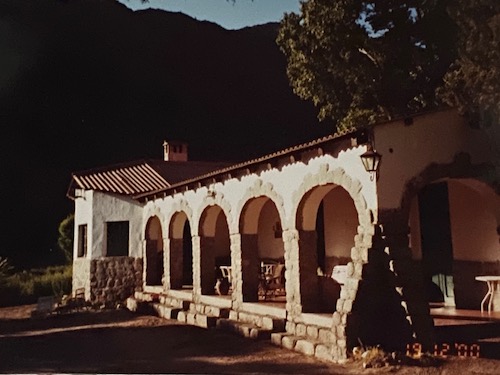
Reliving my Adventures at Home
Granted I was there to learn about the foods of Argentina – mainly exports to the US., but the pride they took in preparing the meal was evident every step of my journey. What appeared on the table, was the bounty of the land, the love they have for what it can produce, and have woven that into the fabric of their meals.
I took this as a framework for creating an Argentinian inspired Sunday Supper with the family complete with Empanadas, Flank Steak with Chimmichurri, Alfajores – with homemade Dulce de Leche, and of course, some Malbec.
